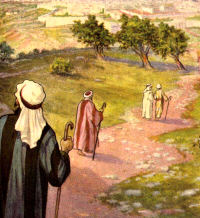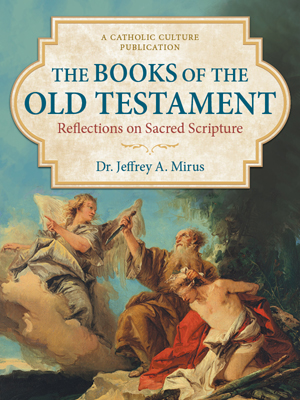Lent: February 18th
Monday of the First Week of Lent
Other Commemorations: St. Tarasius, Bishop and Martyr (RM); Bl. Fra Angelico, Priest (RM)
» Enjoy our Liturgical Seasons series of e-books!
According to the 1962 Missal of Bl. John XXIII the Extraordinary Form of the Roman Rite, today is the feast of St. Simeon, bishop and martyr. He was successor to the apostle St. James in the See of Jerusalem and was arrested and probably crucified in about A.D. 110, under the emperor Trajan. He ruled over the Church of Jerusalem for forty years.
Historically today is also the feast of St. Flavian of Constantinople, Patriarch of Constaninople and martyr of the 5th century.
St. Tarasius of Constantinople
Tarasius was born at Constantinople in the middle of the eighth century, of a noble family. 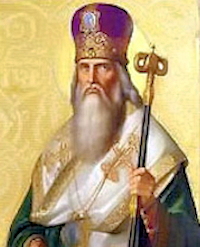 His mother, Eucratia, brought him up in the practice of the most eminent virtues. By his talents and virtue, he gained the esteem of all, and was raised to the greatest honors of the empire, made first a Consul and afterward first Secretary of State to the Emperor Constantine IV and the Empress Irene, his mother. In the midst of the court and in its highest honors, he led a life like that of a religious.
His mother, Eucratia, brought him up in the practice of the most eminent virtues. By his talents and virtue, he gained the esteem of all, and was raised to the greatest honors of the empire, made first a Consul and afterward first Secretary of State to the Emperor Constantine IV and the Empress Irene, his mother. In the midst of the court and in its highest honors, he led a life like that of a religious.
Tarasius was chosen, by the unanimous consent of the court, clergy and people to succeed to the Patriarch of Constantinople. Saint Tarasius declared that he could not in conscience accept the government of a see which had been cut off from the Catholic communion — which had occurred through the fault of his predecessor, who afterward recognized his error in approving a group of dissidents — except on condition that a general Council be convoked to settle the dispute concerning holy images, which was dividing the Church at that time. This being agreed to, he was solemnly declared Patriarch, and consecrated soon afterward, on Christmas Day.
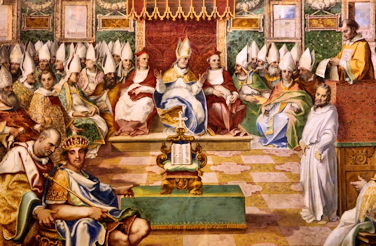 The Council was opened on the 1st of August, 786, in the Church of the Apostles at Constantinople; but, being disturbed by the violence of the Iconoclasts, it adjourned, to meet again the following year in the Church of Saint Sophia at Nicea. The Council declared the positive thought of the Church in relation to the matter under debate, which was whether or not holy pictures and images should be allowed a relative honor. Afterward synodal letters were sent to all the churches, and in particular to the Pope, who approved the council.
The Council was opened on the 1st of August, 786, in the Church of the Apostles at Constantinople; but, being disturbed by the violence of the Iconoclasts, it adjourned, to meet again the following year in the Church of Saint Sophia at Nicea. The Council declared the positive thought of the Church in relation to the matter under debate, which was whether or not holy pictures and images should be allowed a relative honor. Afterward synodal letters were sent to all the churches, and in particular to the Pope, who approved the council.
The life of the holy Patriarch Tarasius was a model of perfection for his clergy and people. His table contained barely the necessaries of life; he allowed himself very little time for sleep, rising the first and retiring last in his spiritual family. Reading and prayer-filled all his leisure hours.
After the Emperor repudiated his legitimate wife and, with the collaboration of a servile priest, married a servant whom he had crowned as Empress in her place, he used all his efforts to gain the Patriarch of Constantinople over to his desires. Saint Tarasius resolutely refused to countenance the iniquity, even when imprisoned by the irritated monarch. Soon afterward, the emperor lost his empire and his life, having spurned the reproaches of Saint Tarasius. The holy man gave up his soul to God in peace after governing his church for twenty-two years in great purity of life, on the 25th of February, 806.
—Excerpted from Lives of the Saints, Our Models and Protectors
Symbols and Representation: Vested as a bishop with omophorion often holding a Gospel book with his right hand raised in blessing
Highlights and Things to Do:
- Read more about St. Tarasius:
- His relics are located in the church of San Zaccaria (St. Zechariah), in Venice, Italy.
Bl. John of Fiesole or Fra Angelico
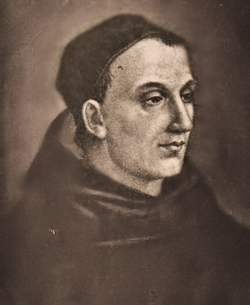 Bl. John of Fiesole, popularly known as Bl. Fra Angelico, was a Dominican painter in the mid-fifteenth century known for the beauty of his paintings and the holiness of his priestly life. Nicknamed “Angelico” by his brothers, his Dominican consecration and life are worthy of imitation as he preached Jesus Christ by his life, his words, and his paintings.
Bl. John of Fiesole, popularly known as Bl. Fra Angelico, was a Dominican painter in the mid-fifteenth century known for the beauty of his paintings and the holiness of his priestly life. Nicknamed “Angelico” by his brothers, his Dominican consecration and life are worthy of imitation as he preached Jesus Christ by his life, his words, and his paintings.
Given the name Guido at Baptism, this saint was born near Vicchio, in the vicinity of Florence, at the end of the 14th century. From his youth he practiced the art of painting. Having entered the Dominican convent in Fiesole, he was given the name Brother Giovanni (Brother John). After ordination he held various responsibilities, one of which was that of prior of the convent in Fiesole.
Faithful to the promises he made as a Dominican, to preach the Gospel after having contemplated it in prayer, Fra Angelico put his creativity at the disposal of the Lord. With brush and paint in hand, he used his talents to transmit to all people the sublimity and the redemptive strength of the divine mysteries.
Between 1425 and 1447, Fra Angelico carried out his activity for the Dominican convents and other ecclesiastical institutes at Fiesole, Florence (most especially at the convent of San Marco), Cortona and Orvieto. The fame of his genius merited him the esteem of the Sovereign Pontiffs Eugenio IV and Nicolas V, who contracted him for the task of frescoing several rooms in the Vatican Palace (1445-49).
Fra Angelico died on February 18, 1455, in the convent of Santa Maria Sopra Minerva in Rome and was buried in the adjoining Basilica, where his body was covered by a simple slab on which was carved his portrait. With a personality that was uncomplicated and clear, Brother Giovanni had lived a poor and humble life, refusing honors and positions.
The virtue and the profound religious spirit which characterized the life of this artist and Dominican is reflected in his spirituality, his purity, and the luminosity of his art. Even before his official recognition as a blessed of the Church, he had been given by the faithful the title “Beato Angelico.” In a moving ceremony on October 18, 1984, Pope John Paul II, on his knees in front of Fra Angelico’s tomb, proclaimed him solemnly to be the universal patron of all artists.
The Incarnation was one of Fra Angelico’s favorite themes, and he painted over 25 variations of it. His painted meditations, so needed at the time of the early Renaissance, are still necessary today. God became man to bring us closer to Himself by way of all things human. He makes all things new by fashioning them into possible vehicles of grace for us, so that by visible realities and concrete concepts, we can arrive at an understanding and a love of higher, invisible realities, all leading to God Himself.
—Excerpted from Nashville Dominicans
Patronage: Artists
Highlights and Things to Do:
- Read more about Fra Angelico:
- CatholicSaints.info has a variety of articles on Fra Angelico and images of many of his artwork.
- Fra Angelico is buried in the Basilica di Santa Maria sopra Minerva (Basilica of Holy Mary Above Minerva).





